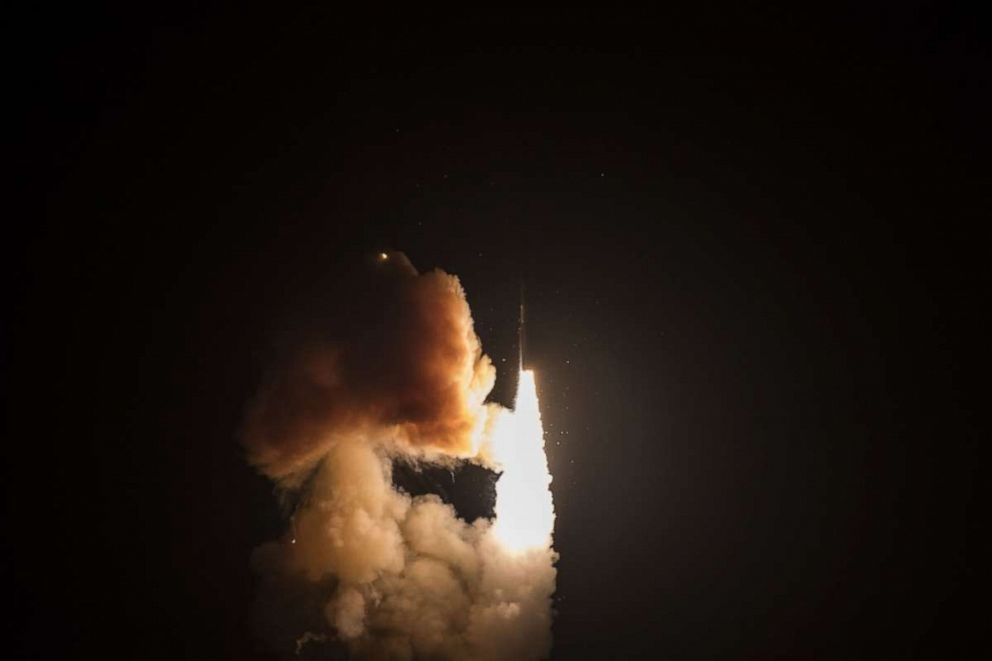On February 5th, the US carried out a test launch of an unarmed Minuteman III intercontinental ballistic missile, out of Vandenberg Air Force Base, California, 30th Space Wing.
The test can be seen in the video below:
The ICBMs are reaching 50 years since they were first deployed across the U.S., the Air Force is checking that its more than 400 Minuteman IIIs can still perform
Simultaneously, the service is looking ahead to the future Ground-Based Strategic Deterrent missiles that will replace Minuteman III and outlast some of the people managing it.
The test was carried out to see if whether a new fuse in development is working as intended.
This test is also different than the typical one. The usual test is the following:
A weapon is withdrawn from its silo at F.E. Warren Air Force Base, Wyoming, Malmstrom Air Force Base, Montana, or Minot Air Force Base, North Dakota, ship it to the Air Force Nuclear Weapons Center at Hill Air Force Base, Utah, for reconfiguration, then bring it to Vandenberg. Once delivered, its boosters are tested and a general idea of the missile’s reliability is achieved.
These development tests, however, include a non-nuclear, and possibly explosive test payload, added by Airmen, as well as other components to gather data on the launch, they load it into a silo and launch it.
“We’re looking at, does it go where it’s supposed to? How accurate is the weapon system?” 576th FTS Commander Col. Omar Colbert said. “How reliable is the weapon system? How ready are our test procedures? How ready is the crew to do what they’re called upon to do and how well does everything function?”
The Air Force pulls weapons from its depot for development tests, in stead of using an in-use missile.
These testing events look at how well a particular new part is working. Jason Yeates, the fuse program’s test manager, said the event would vet its radar system, how the communication system works with the fuse back through the weapon system, and secondary objectives like how it handles temperature variations and vibration.
The fuse program is worth $2.2 billion and it should be ready for use on active missiles from 2024 onwards, first the Minutemen III and then the Ground-Based Strategic Deterrent missiles (GBSD), when they’re ready.
It looks like a “conical silver coffee can,” Yeates said, and essentially controls the time it takes for a missile’s warhead to detonate.
The Air Force works through a test plan set five years in advance that is not tied to geopolitical events. Government entities from the Pentagon to the State Department to the Coast Guard and National Geospatial Intelligence Agency alert the public, maritime vessels, satellite users, aircraft, the Union Pacific Railroad, other countries, and even the International Space Station well in advance of what’s coming.
It’s a long preparation prior to a test, and sometime there’s anomalies, but that doesn’t necessarily mean the test is off.
“Oftentimes, when anomalous things happen, they really don’t affect the way the system operates,” Jerry Rogers, a flight test analyst at the squadron, said. “It’s a very robust system, so you can actually have things that go wrong and it’s still able to carry out the mission, just because of the way they designed it in 1968.”
The entire system is similar to that of the Russian Dead Hand, but apparently much less sophisticated.
“Missileers must give the weapon system what is essentially a “stand-down” order every six hours. If they don’t respond to that prompt within 10 minutes, the missiles will assume that its human operators are dead, and start looking for a launch command from one of the Pentagon’s nuclear mission control aircraft.”
It has been made more sophisticated, with buttons such as “WAR PLAN” not working anymore, and the system not being connected to US decision-makers via floppy disk.
“The Airmen who work on the ICBMs every day were not alive to see the first attacks on Hiroshima and Nagasaki. As talk of great power competition resurges in Washington, they likely do not remember much of the Cold War.
…
They protect an America that has also moved on since the 1990s, and is now fuzzy, at best, on the specifics of the U.S. stockpile.”
But they need to be aware that the day when they must launch the missiles may come, sooner or later. It is still an outdated system, and GBSD seems to be somewhat far into the future.
“For deterrence to be credible, you have to announce that, here’s our weapon system. It works as we designed, and it still works, even though it is aging,” Colbert said. “We have the will, we have the intent, we have the training, we have the forces that are able to employ it professionally, safely, and reliably.”
In comparison the Dead Hand, even back in the Soviet Union-era was much more sophisticated, and it appears that it is continuously kept up to date.
MORE ON THE TOPIC:







These systems assume their enemies are all rational. It is essentially an irrational act that is intended never to be used/has no sense after the fact. Its only value is for deterrence. Whoever came up with this plan was stupid. Especially since the nuclear club is getting bigger and non state actors become more powerful.
Well, seems to have worked pretty well for 70 or so years, even if it has been nerve racking.
Nice! about time the U.S shows their full strength to countries like Iran and NK. Well done.
But after iSSrael! Ladies first! :DD
Better that US nuke system is outdated and old, means less threat to world peace
The great butter battle again. But the Russians have The Dead Hand.